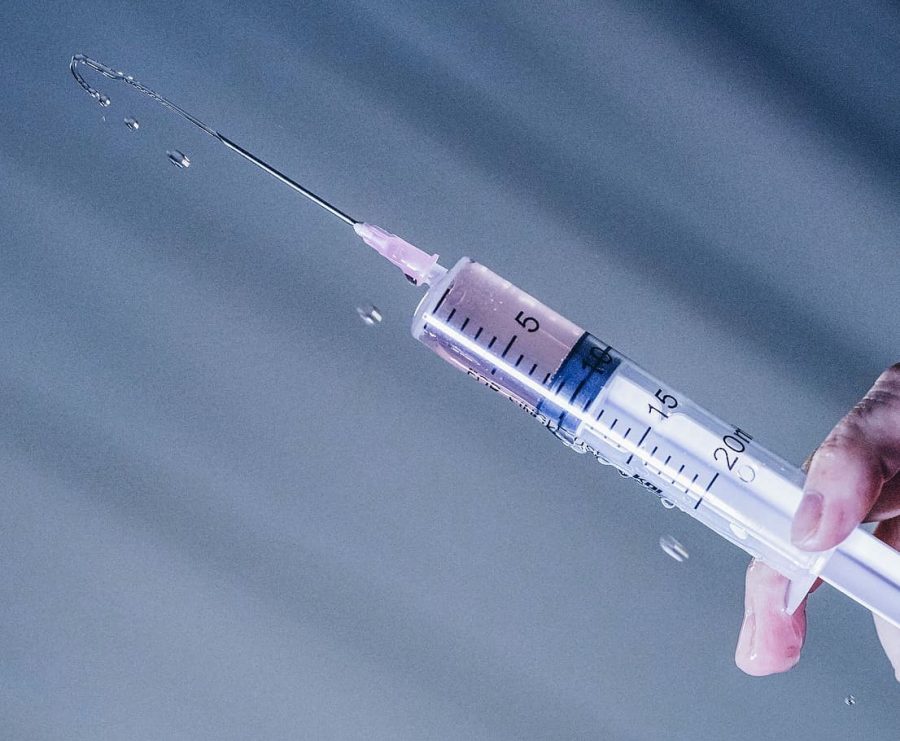Emery: Safe Injection Sites Will Save Lives, If Legislators Let Them
Opposition to this bill is part of a larger “us vs. them” narrative, arguing that those who are addicted have made bad choices and for that they should be punished, never given compassion. (Courtesy Pxfuel)
March 7, 2020
The number of heroin overdose deaths per year in Utah has nearly tripled since 2010. Utah also has a higher rate of deaths from overdose (15.5 deaths per 100,000 persons) compared to the national average (14.6 deaths per 100,000 persons). Deaths from overdoses continue to rise each year despite tools that can save lives when used correctly.
Rep. Jennifer Dailey-Provost introduced legislation to make it lawful for counties and municipalities to use such tools, allowing them to approve plans for safe injection sites. Safe injections facilities allow individuals to inject pre-obtained controlled substances in the presence of a medical professional. This bill would save lives, if only it were permitted by House leadership to be assigned to a committee. But the rhetoric surrounding this and similar proposals from conservatives stigmatizes those who have addictions and puts people in unnecessary danger.
Lifesaving Legislation
Dailey-Provost’s bill has a number of life-saving aspects. It requires that all facilities are sanitary and provide and dispose of sterile consumption supplies to reduce the spread of diseases. A health care professional who has the ability to administer first aid or any treatment in the case of an overdose must be on site at all times. Most importantly, facilities are required to give information to those suffering from addiction. The sites must provide referrals to substance abuse, mental health and social services to those who want it. These sites would also offer instruction on properly disposing of needles, the risk of HIV and how to prevent an overdose.
For all of the benefits these facilities would bring, they would not cost the state any money — counties and municipalities would license private organizations to run the facilities. This legislation would instead add to the state, giving it a better understanding of the extent of the drug crisis in Utah. All facilities would be required to keep statistics about how many injections are performed, how many overdoses occur and how many of those are fatal.
The Fight Against These Facilities in the United States
According to the Drug Policy Alliance, over 120 of these facilities are currently operating in the world, with most of them in Europe and Canada. Yet there are no overdose prevention facilities operating in the United States. A nonprofit group in Philadelphia attempted to open one of these facilities, a move that was resisted by the Department of Justice.
This opposition was based on the Crack House Statute, which makes it a felony to operate a facility where individuals use controlled substances. District Court Judge Gerald McHugh, however, blocked the DOJ’s challenge, stating that Congress could not have foreseen these sorts of facilities when they passed the statute and thus could not have banned them. Because of McHugh’s decision, the Philadelphia group may continue to build toward opening one of these facilities, but an appeal from the DOJ will likely lead to a delay.
There are a number of important reasons that show why these facilities are so necessary. Studies have shown that there is a significant reduction in the number of deaths in the immediate area around safe-injection sites. That same research also found that for one site in Vancouver there were over 766,000 injections in a four year span, resulting in 1,004 overdoses, none of which were fatal. While it is difficult to know for certain, there is also evidence that these sites lead to reductions in the prevalence of infections and HIV. The facilities also offer addicts information about resources that are there to help them, something they may never have access to under the current system.
The System Suffers From a Lack of Compassion
While there has been significant debate about the merits of these facilities nationwide, supporters see them as humane help for those suffering from a disease. Opponents, like U.S. Attorney for the District of Utah John Huber, feel the facilities would degrade the entire area and that resources would be better utilized ridding the area of drugs.
The divisive rhetoric utilized by people like Huber is nothing new. The same thing occurred when Utah first began to implement its needle exchange program. This opposition is part of a larger “us vs. them” narrative arguing that those who are addicted have made bad choices and for that they should be punished, never given compassion. Those attempting to hide their contempt for those suffering from addiction mask their distaste by claiming that these facilities will actually encourage more people to abuse illicit substances. But studies show there is no link between these facilities and an increase in drug sales.
The past century of U.S. drug policy — especially the past 50 years — have consistently shown that aggressive punishment of drug use is not effective. Drugs will remain a societal problem no matter how heavily they are criminalized. Safe injection facilities require no resources from the state. They prevent those who are addicted from risking their lives with every hit and give them an opportunity to seek treatment.
The opposition to Dailey-Provost’s bill is not at all surprising. Utah, like the United States as a whole, has consistently taken a “tough on crime” stance. But after decades of trying this approach, the state is no closer to eliminating drug addiction. Instead, criminalization has forced addicts to consume drugs that may have been cut with life threatening chemicals in the shadows. Any hit could be their last one. Utah needs to see the error in its ways and treat drug addicts with compassion. Passing legislation to allow safe injection sites is the first step toward that goal.







